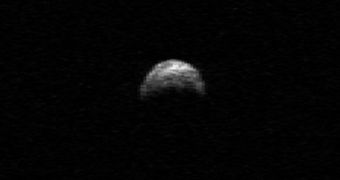Until now, studying comets and asteroids was a fairly straightforward business. This type of exploration called for the use of space probes, but an upcoming flyby of a large asteroid will require no such thing. For all intents and purposes, it will be our planet carrying out the flyby.
The space rock in question is the large asteroid 2005 YU55, which will fly by our planet this November. The event will give astronomers the chance to learn more about the origins of such objects, and maybe even the solar system and the planets within.
Thus far, scientists have sent no less than 16 robotic space probes to scout the solar system for such objects. These spacecraft operate in addition to those that were launched specifically to investigate certain planets, moons, or other destinations.
But the new investigations session will require no rocket at all. Experts will simply have to have their telescopes on standby, and start carrying out their observations when the time is right. This particular object, experts say, only approaches Earth so closely once every 25 years or so.
“On November 8, asteroid 2005 YU55 will fly past Earth and at its closest approach point will be about 325,000 kilometers [201,700 miles] away,” explains the NASA Near-Earth Object Program Office manager, Don Yeomans.
“This asteroid is about 400 meters [1,300 feet] wide – the largest space rock we have identified that will come this close until 2028,” the expert adds. The NEO Program Office is based at the NASA Jet Propulsion Laboratory (JPL), in Pasadena, California.
When the object was first discovered, some astronomers believed that there was a significant chance it will hit Earth during its close flyby. This usually happens to asteroids that stray too close to planets, and have their trajectories nudged by the intense gravitational pulls the latter develop.
“YU55 poses no threat of an Earth collision over, at the very least, the next 100 years. During its closest approach, its gravitational effect on the Earth will be so minuscule as to be immeasurable,” Yeomans goes on to say.
“It will not affect the tides or anything else,” the expert adds. However, ground-based observatories will have the chance to observe it in detail. Telescopes around the world will most likely track it as it approaches, whizzes past, and then moves away.
“Using the Goldstone radar operating with the software and hardware upgrades, the resulting images of YU55 could come in with resolution as fine as 4 meters per pixel,” explains JPL radar astronomer Lance Benner.
“We're talking about getting down to the kind of surface detail you dream of when you have a spacecraft fly by one of these targets,” he concludes.

 14 DAY TRIAL //
14 DAY TRIAL //